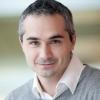QM
Quantum Mechanics
In connection with the so-called 2nd quantum revolution, the group is deepening our understanding of the quantum world through elaborate mathematical methods, particularly in quantum many-body theory, quantum computing, or metrology.
Since its origins in the 1920s, Quantum Mechanics has remained one of the most vibrant and intellectually rich areas of research in both Physics and Mathematics. However, since the early 2000s, and with a significant acceleration in recent years, we have witnessed a turning point with the rise of what is now called the second quantum revolution, or Quantum 2.0.
Our group’s activities are fully in line with this scientific evolution, and lie at the intersection of fundamental and applied research. On the one hand, we address fundamental questions that advance our understanding of Mathematics and Physics; on the other, we actively contribute to the development of emerging quantum technologies, creating a productive synergy between theory and application - and potentially shaping entirely new paradigms.
The group is structured into two closely interconnected divisions, each bringing complementary perspectives to the overarching goal of advancing quantum science and technology:
- The first division is built around the foundational mathematical work of J.-B. Bru in the field of Quantum Mathematics. This line of research is dedicated to rigorously exploring the deep connections between the microscopic, mesoscopic, and macroscopic properties of complex quantum systems. In Mathematics, it is reminiscent of Hilbert’s sixth problem, among his 23 problems which have been authoritative for the twentieth century Mathematics. The group's expertise in this field spans a wide range of mathematical disciplines, with a particular focus on infinite-dimensional analysis and operator algebras, providing the tools to build a solid theoretical understanding of complex quantum phenomena.
- The second division, led by M. Sanz, is oriented towards quantum technologies, with a strong emphasis on q Quantum Computing and Quantum Metrology, and an emerging interest in Light–Matter Interaction models in hollow-core optical fibers. This line of work aims to bridge the gap between theory and experiment, contributing to the design of quantum algorithms, protocols for quantum benchmarking and verification, and strategies for precision measurement using quantum resources. The team is also actively engaged in collaborations with industry and other research institutions, helping to shape the future of Quantum 2.0 applications through theoretical innovations and practical implementations.
Together, these two divisions form a dynamic, multidisciplinary group that combines deep mathematical insight with technological ambition, enabling progress to be made at the frontier of quantum science.
There are two important and interconnected lines of research, which either generate new knowledge in Mathematics and Physics or support new quantum technologies:
Quantum Mathematics: Since its inception almost a century ago, quantum physics has brought us many innovations, such as the transistor and the laser. In recent years, its impact has accelerated considerably, leading to a global race for the quantum advantage. The first research direction does not aim at producing technological spin-offs, but to deepen our understanding of the quantum world through purely mathematical work. We are talking here about Quantum Mathematics, an intrinsically interdisciplinary field of Mathematics. Quantum many-body theory is an important area in this context, relating to the derivation of effective, or phenomenological, theories from microscopic laws. It is studied for instance by the subgroup led by J.-B. Bru, which focuses on understanding interacting systems of Condensed Matter Physics, for example in quantum transport. The mathematical study of quantum systems in the presence of interactions is a major and notoriously difficult subject in Mathematics. The hurdles that have to be overcome in order to arrive at important mathematical results involve a very rich interplay of mathematical fields such as stochastic analysis, operator algebras, differential equations, semiclassical analysis, functional and convex analysis, constructive methods in quantum field theory, etc.
Quantum Technologies: The research group led by Dr. Mikel Sanz is at the forefront of quantum technologies, with work organized around five closely interconnected research areas. These include the development of quantum algorithms for solving Partial Differential Equations (PDEs) and advancing Quantum Machine Learning (QML); the refinement of hybrid quantum-classical computing frameworks, particularly the Digital-Analog Quantum Computing (DAQC) paradigm; the AI-driven optimization of superconducting quantum processor architectures, featuring novel multimode qubit designs; the creation of scalable benchmarking and verification protocols to ensure hardware fidelity and enable cross-platform comparisons; and quantum metrology, focusing both on the theoretical limits of information extraction and on practical implementations such as quantum Doppler sensing. By combining fundamental research with technological innovation, the group seeks to drive progress toward fault-tolerant quantum computing and to build strong, cross-disciplinary collaborations with academic and industrial partners alike.




